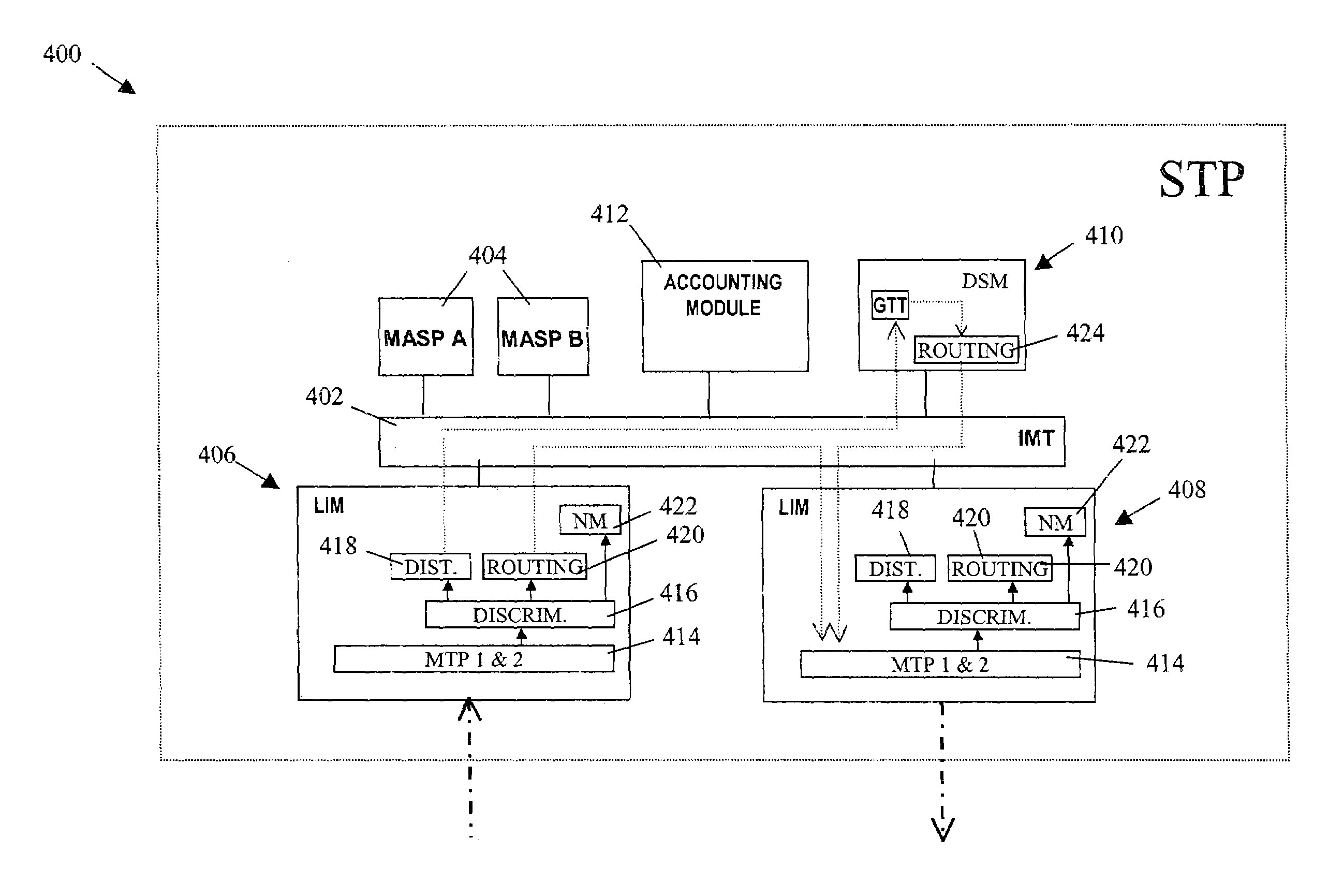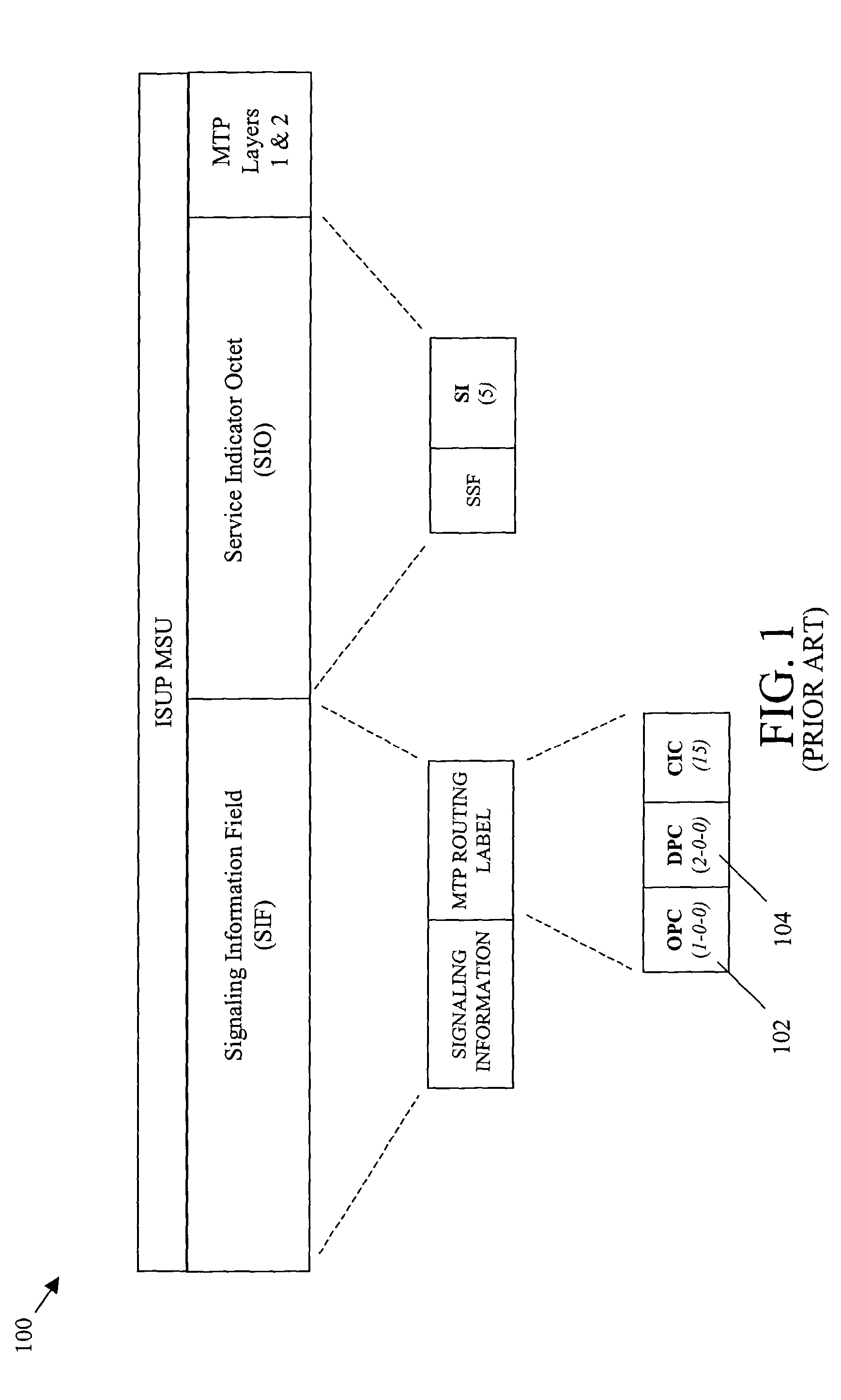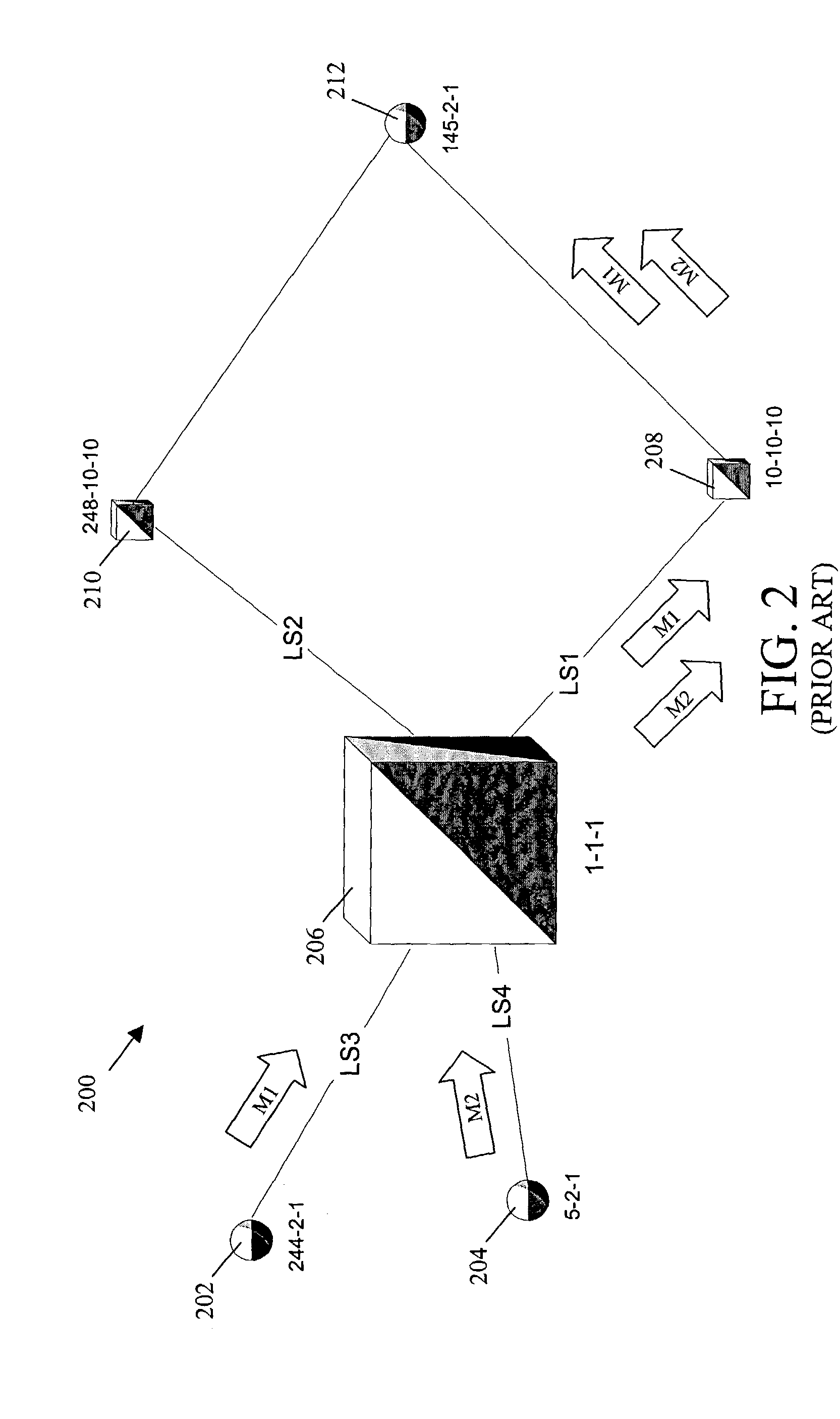Methods and systems for routing signaling messages to the same destination over different routes using message origination information associated with non-adjacent signaling nodes
a signaling message and route technology, applied in the field of routing signaling messages, can solve the problems of unsuitable network routing scheme, no way to control the exact path or route taken by the message, and no conventional routing procedur
- Summary
- Abstract
- Description
- Claims
- Application Information
AI Technical Summary
Benefits of technology
Problems solved by technology
Method used
Image
Examples
Embodiment Construction
[0029]Disclosed herein are several embodiments of the present invention, which may include an underlying hardware platform similar to that of a signal transfer point or an SS7 / IP gateway. FIG. 5 is a block diagram illustrating an exemplary STP node 300, which employs a distributed, multi-processor system architecture suitable for use with embodiments of the present invention. As shown in FIG. 5, an STP 300 includes the following subsystems: a maintenance and administration subsystem (MAS) 302, a communication subsystem 304 and an application subsystem 306. MAS 302 provides maintenance communications, initial program loading, peripheral services, alarm processing and system disks. Communication subsystem 304 includes an interprocessor message transport (IMT) bus that is the main communication bus among subsystems in STP 300. The IMT bus includes 1 Gbps counter-rotating serial rings.
[0030]Application subsystem 306 includes application cards or printed circuit boards capable of communi...
PUM
 Login to View More
Login to View More Abstract
Description
Claims
Application Information
 Login to View More
Login to View More - R&D
- Intellectual Property
- Life Sciences
- Materials
- Tech Scout
- Unparalleled Data Quality
- Higher Quality Content
- 60% Fewer Hallucinations
Browse by: Latest US Patents, China's latest patents, Technical Efficacy Thesaurus, Application Domain, Technology Topic, Popular Technical Reports.
© 2025 PatSnap. All rights reserved.Legal|Privacy policy|Modern Slavery Act Transparency Statement|Sitemap|About US| Contact US: help@patsnap.com



